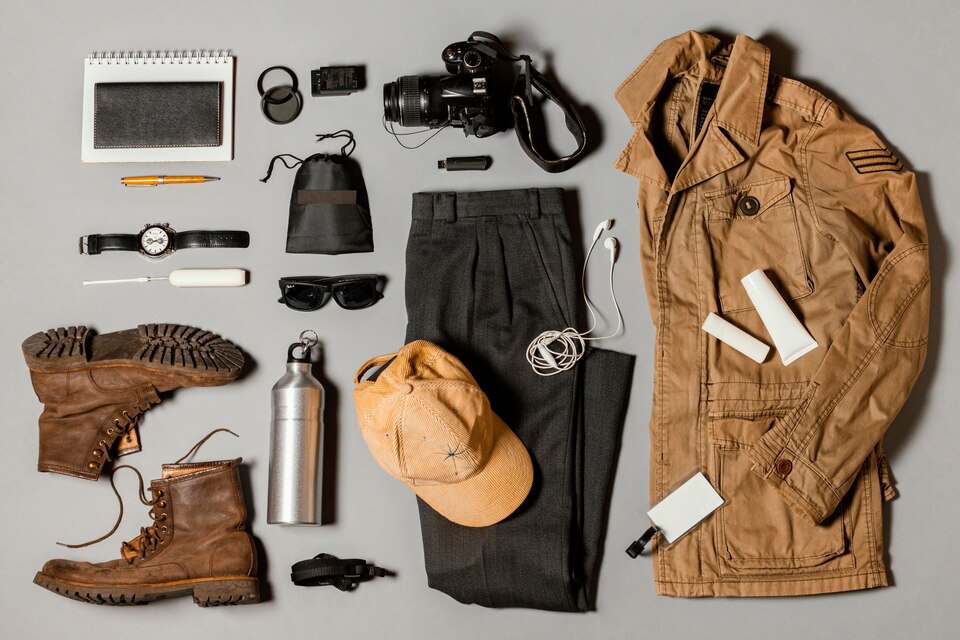In a world where first impressions matter, mastering the art of dressing appropriately for every occasion is valuable. From casual gatherings to formal galas, this guide deciphers dress codes, delves into cultural considerations, and offers practical advice when you wonder, “What should I wear?” Whether business formal or beach attire, this comprehensive guide ensures you’re always dressed to impress.
Understanding Dress Codes
Understanding dress codes is like decoding a language of attire. These unspoken guidelines dictate appropriate clothing for various events and occasions. They serve as a common understanding among attendees, ensuring everyone aligns with the event’s formality and purpose. The psychology behind dress codes is intriguing, as clothing reflects personal style and influences perceptions. Knowing how to read and interpret dress codes allows individuals to confidently navigate social and professional situations, demonstrating respect for the occasion and those in attendance.
Casual and Everyday Dress Codes
Casual and everyday dress codes encompass various situations, from relaxed gatherings with friends to running errands. Here’s how to navigate these standard dress codes:
- Casual Attire:
Casual attire is the most relaxed dress code and is suitable for informal settings like weekend outings or casual get-togethers. Men can opt for jeans or chinos paired with a t-shirt or a casual shirt. Sneakers or loafers complete the look. Women can wear jeans, shorts, or skirts with comfortable tops like t-shirts or blouses and casual footwear like sneakers or sandals.
- Smart Casual:
Bright casual balances comfort and style, making it ideal for semi-formal events or dinners. Men can wear well-fitted trousers or chinos with a dress shirt or a polo shirt. Add a blazer for a polished touch. Women can choose from various options, including dresses, skirts, slacks, and blouses. Footwear can include loafers, ankle boots, or stylish sneakers.
- Business Casual:
Business casual attire is often required in workplace settings where professionalism is expected, but a more relaxed approach to dressing is allowed. Men can dress slacks with a dress shirt (ties are optional) and leather shoes. Women can opt for tailored pants or skirts with blouses or knitted tops. Closed-toe flats or low heels are appropriate. Avoid overly casual items like jeans and sneakers.
Formal Dress Codes
Formal dress codes are often associated with events that demand the utmost elegance and sophistication. Here’s a breakdown of some of the most common formal dress codes:
- Business Formal:
Formal attire is reserved for corporate settings, high-level meetings, or professional conferences. This means wearing a dark, well-fitted suit with a dress shirt and a conservative tie for men. Women should opt for tailored pant suits or knee-length dresses with closed-toe pumps. The focus here is on professionalism and a polished appearance.
- Black Tie:
Black tie events are considered highly formal and are usually evening affairs. For men, this dress code requires a black tuxedo, a white dress shirt, a black bowtie, and formal black shoes. Women have more flexibility but often choose full-length gowns or elegant cocktail dresses. The goal is to exude sophistication and glamor.
- White Tie:
White tie is the pinnacle of formal attire and is reserved for the most prestigious events, such as state dinners or royal galas. Men should wear a black tailcoat, matching trousers, a white wing-collared dress shirt, a white bowtie, and patent leather shoes. Women should select full-length gowns, often with long gloves and elaborate accessories. The emphasis here is on impeccable, traditional elegance.
Special Occasions and Themes
Special occasions often come with unique dress codes and themes, challenging individuals to adapt their attire creatively while adhering to the event’s guidelines. Here’s a closer look at some of these special occasions and how to dress for them:
- Cocktail Attire:
Cocktail attire bridges the gap between casual and formal. It’s associated with semi-formal events like cocktail parties, evening weddings, or upscale dinners. A gloomy suit with a dress shirt and tie is appropriate for men. Women can opt for elegant knee-length dresses or dressy separates. Accessories like statement jewelry and sleek shoes complete the look.
- Beach Attire:
Dressing for beach events emphasizes comfort, functionality, and style. Men can opt for lightweight linen shirts and breathable shorts, while women can choose airy sundresses or maxi dresses. Footwear should be sandals or flip-flops. Don’t forget sun protection like hats and sunglasses.
- Costume and Themed Parties:
Costume and themed parties invite creativity and a sense of fun into attire choices. The key is fully embracing the theme and committing to the chosen character or concept. Whether it’s a retro ’80s party, a masquerade ball, or a movie-themed event, research and planning are essential to ensure your costume aligns with the theme and stands out.
Dress Codes in Professional Settings
Navigating the world of professional dress codes is essential for projecting competence and confidence in the workplace. What you wear to work influences how colleagues and superiors perceive you and reflects your respect for the organization’s culture and values. Here’s a breakdown of dress codes in professional settings:
- Office Attire:
Office dress codes can vary widely depending on the industry and company culture. In more traditional or corporate settings, formal business attire is the norm. This includes tailored suits, dress shirts, conservative ties for men and tailored suits, blouses, and skirts or slacks for women. In contrast, tech companies and startups may embrace a business casual dress code, allowing for a more relaxed yet professional appearance.
- Interview Attire:
Dressing appropriately for a job interview is essential, as it fixes the tone for your professionalism and suitability for the role. For conservative industries like finance or law, stick to formal business attire. Men should opt for a suit and tie, while women can wear a pantsuit or a conservative dress with a blazer. In creative or less formal industries, business casual attire may be suitable. Research the company culture beforehand to make an informed decision.
- Dress Codes by Industry:
Different industries have their dress codes influenced by the nature of their work and clientele. For example, the attire expected in a law firm may differ significantly from that in a graphic design studio. It’s essential to align your clothing choices with the expectations of your specific industry. If in doubt, observe what senior-level colleagues wear, as they often set the standard.
Conclusion
Dressing appropriately for every occasion is a powerful tool that reflects respect, confidence, and an understanding of social norms. “A Complete Guide to Dress Codes: What to Wear for Every Occasion” has provided comprehensive insights into understanding and navigating dress codes. By grasping the nuances of each dress code category, individuals can confidently choose the proper attire for any event, making a positive impression and ensuring they feel comfortable and in sync with the occasion’s expectations.




